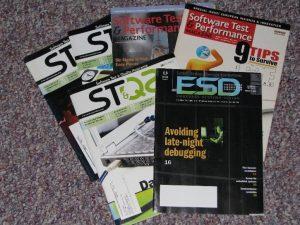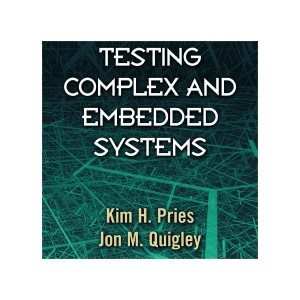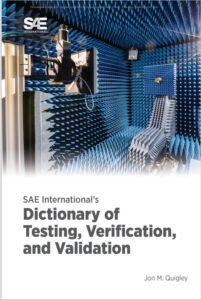Comparing Robert Fey’s Thoughts with Jon M. Quigley’s Published Work
Written with Perplexity – also found at https://www.perplexity.ai/search/write-a-responser-to-the-post-aOnmPGV4SoeB_AawG1JTJQ#0
The post from Robert Fey:
https://www.linkedin.com/posts/robert-fey-78178b154_automotivetesting-requirementsengineering-activity-7330094926694662144-Wsy4/
My Thoughts – From Me
In general, we should not think of product verification and validation efforts dogmatically. We are well advised to think in terms of principles. Everything is context-dependent, the degree of diligence commensurate with the associated risk. We need a cohesive philosophical approach to testing the product. This includes multiple testing approaches, the ability to trace the test case and any product failure to the impacts on the system, also important. In general, testing is there to refute the product is of good quality, let’s get away from mental maladies such as confirmation bias.
Robert Fey’s Perspective on Automotive Testing and Requirements Engineering
In his LinkedIn post, Robert Fey highlights several persistent challenges in automotive testing and requirements engineering. He emphasizes that testers are often the first to recognize product issues but are rarely involved early enough in the process to influence product quality meaningfully. Fey argues that testing is too frequently treated as a late-stage, box-ticking exercise rather than a core part of verification and validation (V&V). He points out that requirements engineering should begin as soon as the RFQ is issued, involving a blend of skilled engineers, including testers, from the outset. Fey also notes a disconnect between the testing activities performed and the actual value they provide, often driven by metrics that don’t necessarily reflect product quality. He calls for a shift toward integrating testing and quality assurance throughout the product development lifecycle, not just at the end2.
Jon M. Quigley’s Published Philosophy
Jon M. Quigley, a recognized authority in product development and automotive project management, shares many of Fey’s concerns but provides a structured framework for addressing them. In his book Project Management for Automotive Engineers, Quigley stresses the importance of process integration, early requirements gathering, and the critical role of testing strategies that align with both product specifications and customer needs. He distinguishes clearly between verification (ensuring the product was built correctly) and validation (ensuring the right product was built), echoing Fey’s distinction4.
Quigley advocates for:
-
Early integration of quality assurance and testing in the development process.
-
Cross-functional collaboration between architects, designers, testers, and other stakeholders.
-
The use of structured frameworks and metrics to guide improvement, emphasizing capability and process maturity over mere tool adoption or test count45.
-
Continuous feedback loops and adaptation, drawing lessons from industries like aerospace where requirements and test traceability are tightly linked.
Key Points of Comparison
| Theme | Robert Fey’s View | Jon M. Quigley’s Approach |
|---|---|---|
| Early Test Involvement | Testers must be included from the start, not just at the end2. | Advocates early QA integration and requirements traceability45. |
| Role of Testing | Testing is undervalued, often reduced to box-ticking2. | Testing is a strategic, process-driven activity45. |
| Verification vs. Validation | Distinguishes both, but sees confusion in practice2. | Clearly defines and operationalizes both concepts4. |
| Metrics and Value | Critiques focus on test counts over value delivered2. | Emphasizes capability, maturity, and outcome-based metrics5. |
| Process and Culture | Notes waterfall legacy and lack of tester influence2. | Stresses process integration, leadership, and cultural change45. |
| Industry Lessons | Suggests learning from aerospace/defense on requirements linkage2. | Cites cross-industry best practices, including aerospace4. |
Synthesis
Both Fey and Quigley agree that quality assurance and testing must be embedded throughout the product development lifecycle, not relegated to late-stage activities. Fey’s practitioner perspective highlights the frustrations and systemic issues testers face. At the same time, Quigley’s work provides a roadmap for overcoming these through structured process improvement, early integration, and effective use of metrics. Quigley’s frameworks offer practical solutions to many of the challenges Fey describes, emphasizing that true efficiency and product quality come from capability-driven, collaborative, and process-oriented approaches to testing and requirements engineering45.
In summary, Fey’s observations about the shortcomings in automotive testing culture are validated and addressed in Quigley’s published work, which provides both the philosophical foundation and practical tools for achieving the integration and effectiveness Fey advocates.
For more information, contact us:
The Value Transformation LLC store.
Follow us on social media at:
Amazon Author Central https://www.amazon.com/-/e/B002A56N5E
Follow us on LinkedIn: https://www.linkedin.com/in/jonmquigley/





